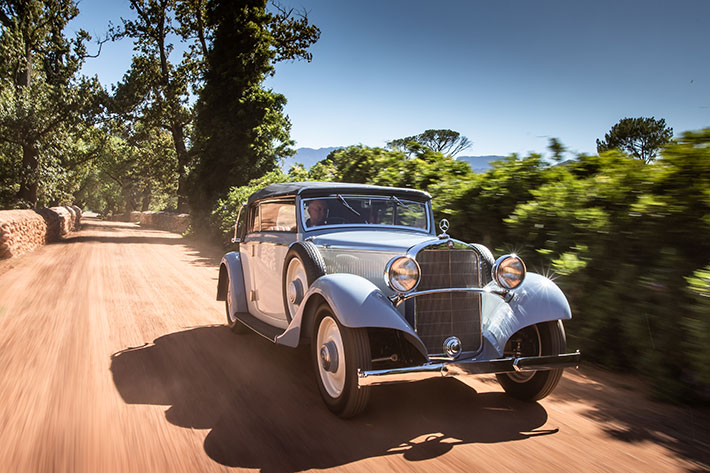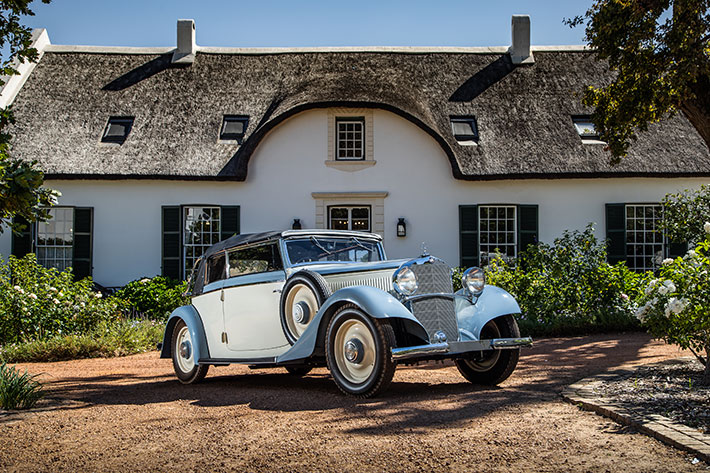
27 May Collection in Action: Mercedes-Benz W21
Mike Monk drives a short-lived but key model in Mercedes-Benz’s development as a manufacturer of quality automobiles…
The Mercedes-Benz W21 is something of an enigma in the company’s heritage because it was only produced for three years, from 1933 to 1936, and the model’s records were lost – along with many other documents – when the Mercedes-Benz archive in Mannheim was destroyed during WW2. The car was actually called the Mercedes-Benz 200 – or Typ(e) 200 – but retrospectively it is commonly referred to as the W21 to avoid confusion with many other later M-Bs that carried the ‘200’ badge.
The (W21) 200 was launched at the International Motor and Motorcycle Show in Berlin in February 1933. It was the second of chief designer and ex-Benz & Cie CEO Hans Nibel’s new models that would form the mainstay of Mercedes-Benz production in the difficult Depression years of the mid-1930s. The car was fundamentally a slightly larger, more powerful replacement of the (W15) 170. The wheelbase was lengthened to 2 700 mm, and the engine was a development of the 170’s inline, six-cylinder. Increasing the bore took capacity from 1 692cm3 to 1 961 cm3, helping to raise peak power to 40 hp (30 kW) at 3 600 r/min, and produce 112 N.m of torque at a lowly 1 100. The gearbox was effectively a three-speed plus overdrive unit with synchromesh on the top two ratios, which helped realise a top speed of 98 km/h. Hydraulic drum brakes were fitted all round. Solid disc wheels were shod with 5,25/5,5×18-inch tyres. The front axle was suspended on transversely-mounted upper and lower leaf springs, with swing axles and coil springs at the rear.
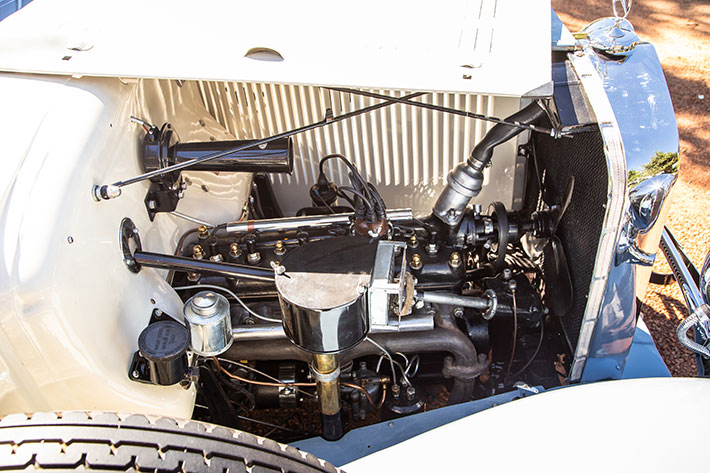
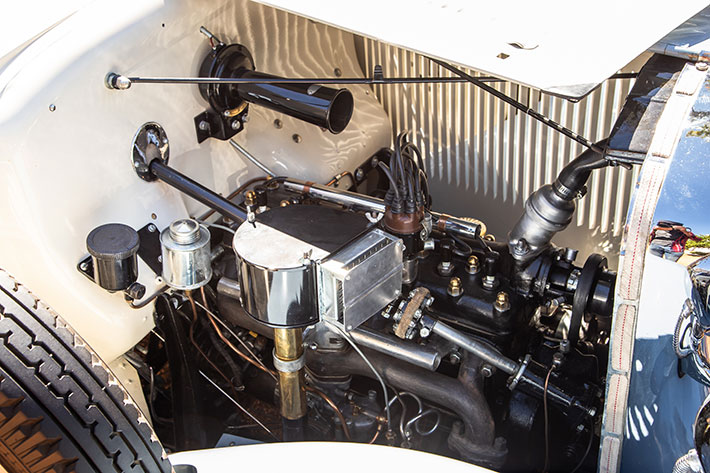
Initially, the choice of body styles was limited and the W21’s slightly angular looks and squat radiator were considered to lack the “prestigious appearance of its predecessor”, so in February 1934 a significant revamp took place. Along with a subtle reshaping of the radiator, a 350 mm-longer wheelbase chassis was introduced and the model range increased to include a six-seater Pullman Limousine, a Pullman Landaulet and a longer Tourenwagen to complement a more streamlined four-door Limousine, and no less than three different cabriolets, listed respectively as the Cabriolet A, Cabriolet B and Cabriolet D. Top speed of the heavier long-wheelbase derivatives dropped to around 95 km/h. As an aside, the space inside the Pullman Limousine made it especially suitable for use as a Kraftdroschke (taxi cab).
In 1935, changes included larger dials in the instrument panel, a reinforced frame and a stiffer front end with a metal bulkhead to combat body vibration. Most body variants were lowered, too, and the range was augmented by three new long-wheelbase variants, while a 4/5-seater four-door saloon met the demand for increasing customer requests for more space. Topping all this (excuse the pun), roof options abounded: a standard-wheelbase saloon was available with either a retractable roof made in Sindelfingen or a sliding roof manufactured by Happich. The lwb saloon could be ordered with a sliding roof from Happich or Webasto, while the Pullman saloon was available with a standard or special-version Webasto sliding roof.
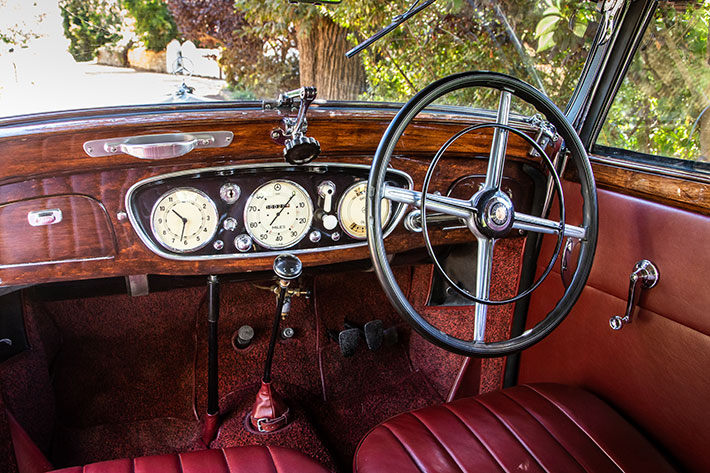
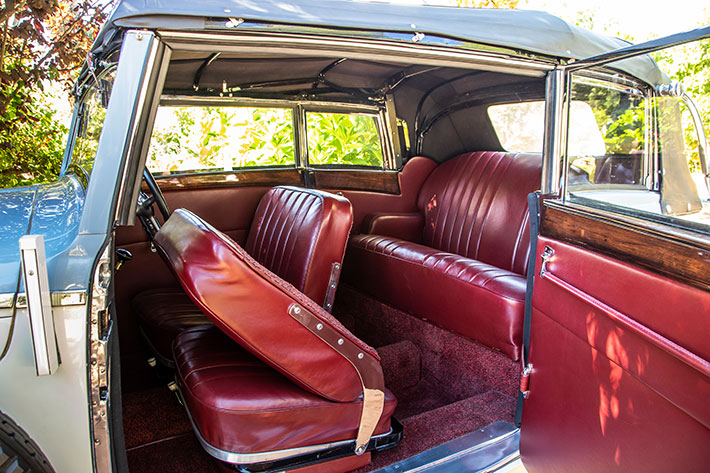
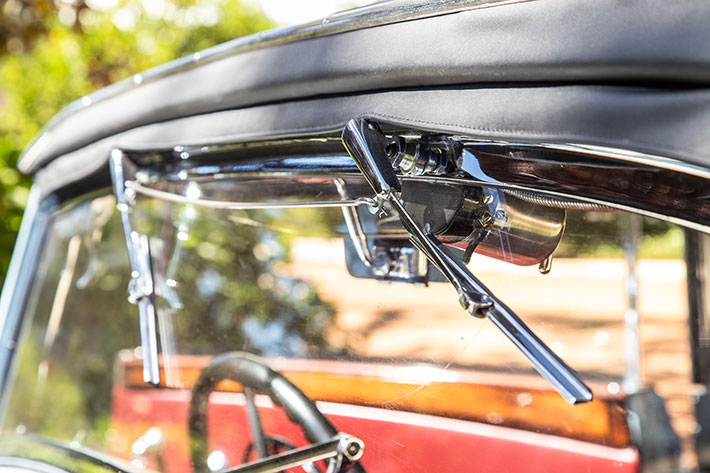 Mercedes-Benz’s presence in SA only really got going when imports began arriving in the wake of Minister of Transport Oswald Pirow’s visit to Germany in 1933. FMM’s recently-restored W21 is a 1934 Cabriolet B, thus benefits from the longer wheelbase that allowed for spare wheels to be housed in the fenders on both sides close to the exposed indicator arms. It was originally acquired by the Rembrandt Tabakvervaardigingskorporasie from Dr J van S S Lochner of Rustenburg on 6 June 1979 for R7 500 before it became part of the Heidelberg Motor Museum, which, in turn, was the foundation of FMM’s collection.
Mercedes-Benz’s presence in SA only really got going when imports began arriving in the wake of Minister of Transport Oswald Pirow’s visit to Germany in 1933. FMM’s recently-restored W21 is a 1934 Cabriolet B, thus benefits from the longer wheelbase that allowed for spare wheels to be housed in the fenders on both sides close to the exposed indicator arms. It was originally acquired by the Rembrandt Tabakvervaardigingskorporasie from Dr J van S S Lochner of Rustenburg on 6 June 1979 for R7 500 before it became part of the Heidelberg Motor Museum, which, in turn, was the foundation of FMM’s collection.
It is a graceful design, and the pale blue and cream paintwork simply adds to the overall appearance. Chrome-plated headlamps are mounted on a stabiliser bar between the front fenders, and other brightwork consists of the chrome-plated radiator grille and waist-high full-length chrome strips along the sides. The windscreen and side glass have chrome surrounds too: a slim B-pillar precludes the cabrio being ‘pillarless’. The running boards have rubber inserts, and in what is a generally well-proportioned profile, only the exterior-hinged boot looks slightly out of scale, but is nevertheless functional.
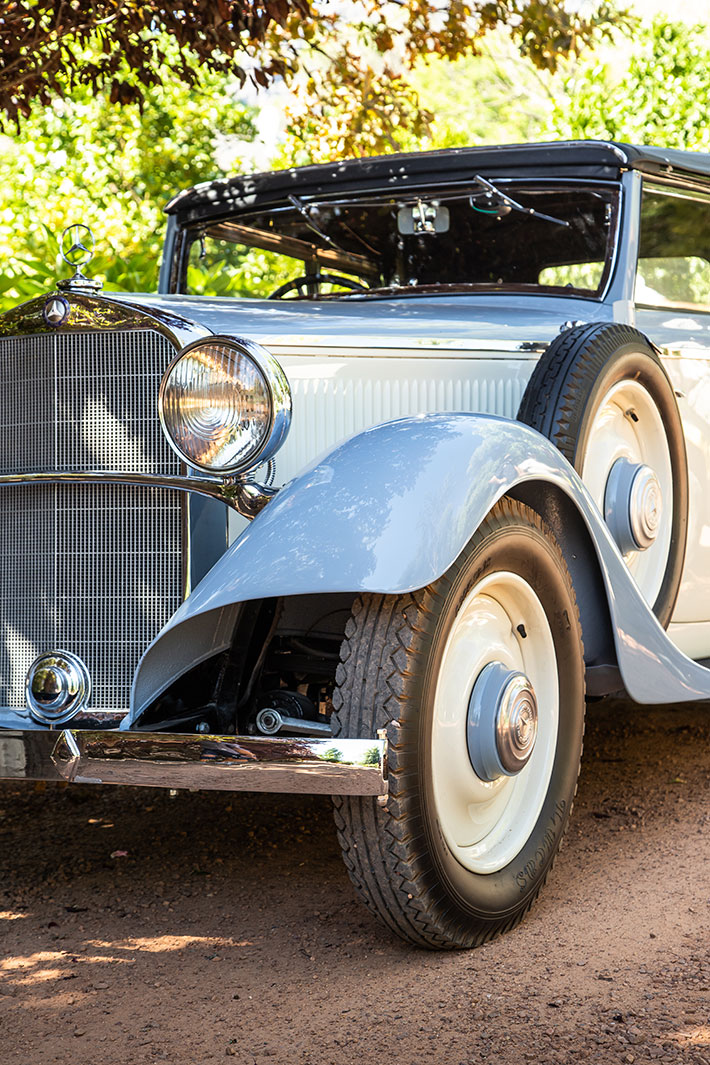
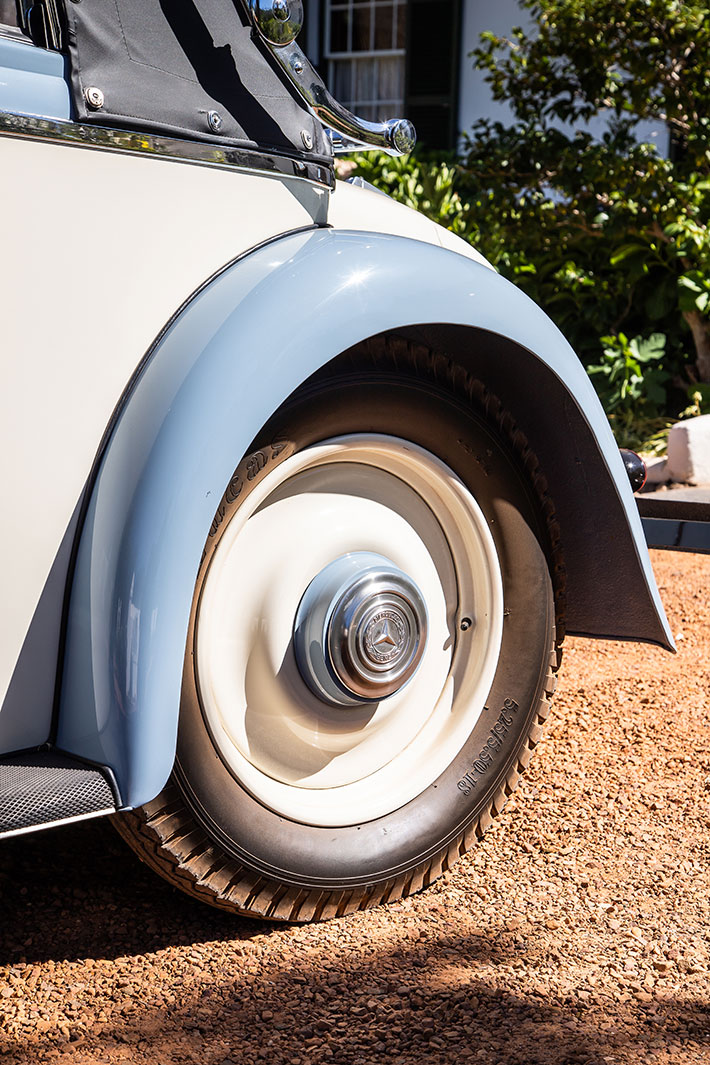
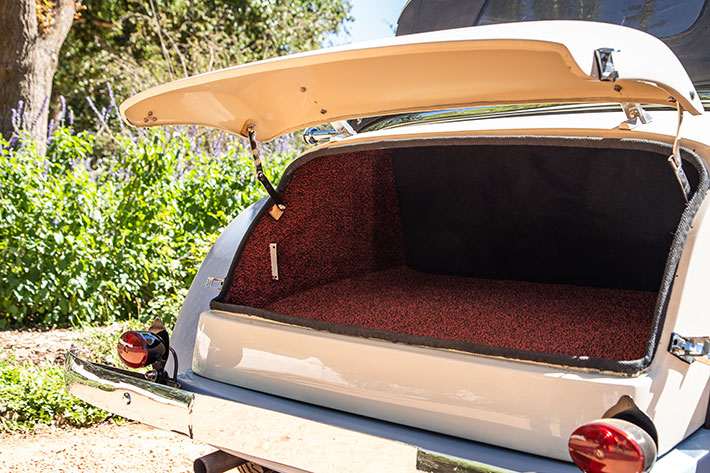
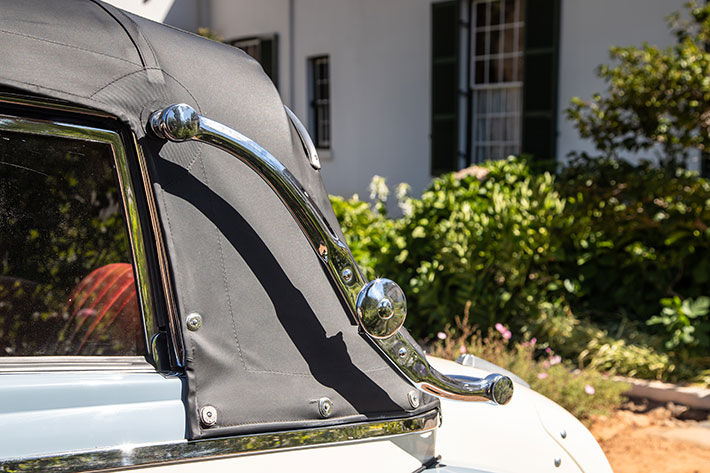 Open the rear-hinged doors and inside it is the expected combination of leather, wood veneer, chrome and quality carpeting. Seats are comfortable and offer fore-aft adjustment – not always a given in the period. The large, four-spoke steering wheel with full horn ring fronts the elegant dashboard, which has a lidded glovebox at each end. A central black-faced instrument cluster houses matching dials for a clock, speedometer (calibrated in mph in this right-hand model) and fuel and oil gauges, along with the necessary switchgear. The windscreen glass is hinged at the top and can be opened for additional ventilation.Releasing catches of the top corners of the windscreen frame releases the black fabric roof. As was the method of the day, the exterior chromed hinges at the rear sides of the hood resemble those of a perambulator, and are as stylish as they are functional. The back window is narrow but relatively deep, which does allow reasonable rearward vision, which is non-existent when the roof is folded.
Open the rear-hinged doors and inside it is the expected combination of leather, wood veneer, chrome and quality carpeting. Seats are comfortable and offer fore-aft adjustment – not always a given in the period. The large, four-spoke steering wheel with full horn ring fronts the elegant dashboard, which has a lidded glovebox at each end. A central black-faced instrument cluster houses matching dials for a clock, speedometer (calibrated in mph in this right-hand model) and fuel and oil gauges, along with the necessary switchgear. The windscreen glass is hinged at the top and can be opened for additional ventilation.Releasing catches of the top corners of the windscreen frame releases the black fabric roof. As was the method of the day, the exterior chromed hinges at the rear sides of the hood resemble those of a perambulator, and are as stylish as they are functional. The back window is narrow but relatively deep, which does allow reasonable rearward vision, which is non-existent when the roof is folded.
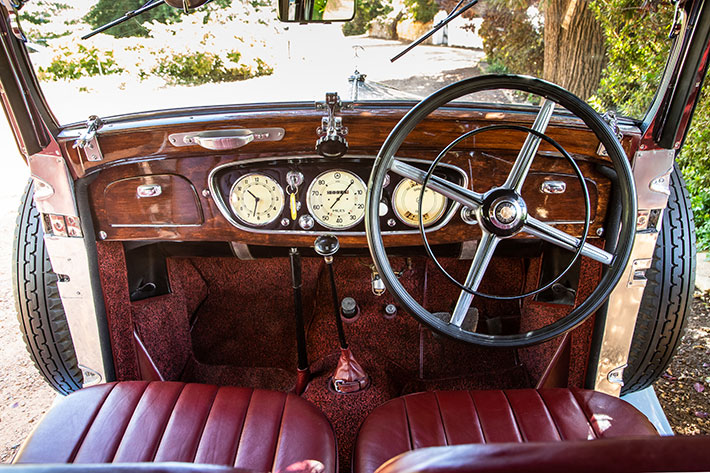 A stop-cock for the fuel line from the gravity feed tank lies under the dashboard. Open up the main line valve – there is a separate one for reserve – twist and push the key for ignition, press the floor-mounted starter button and the engine kicks into life. It is a smooth-running motor with a pleasing exhaust note, but as customers were to discover, it lacks muscle, so stately progress is the order of the day. The gear shift is a wiggle-woggle affair with top offset to the right, but its action gets better with familiarisation. Ride is comfortable, and the steering is only hard work at parking speeds: the turning circle is 11,8 metres. But the pièce de résistance, if you will, of driving a Mercedes such as this, is looking over the tapering bonnet at the three-pointed star atop the grille – a sight for aiming at the horizon. An idealistic concept maybe, but why not…?
A stop-cock for the fuel line from the gravity feed tank lies under the dashboard. Open up the main line valve – there is a separate one for reserve – twist and push the key for ignition, press the floor-mounted starter button and the engine kicks into life. It is a smooth-running motor with a pleasing exhaust note, but as customers were to discover, it lacks muscle, so stately progress is the order of the day. The gear shift is a wiggle-woggle affair with top offset to the right, but its action gets better with familiarisation. Ride is comfortable, and the steering is only hard work at parking speeds: the turning circle is 11,8 metres. But the pièce de résistance, if you will, of driving a Mercedes such as this, is looking over the tapering bonnet at the three-pointed star atop the grille – a sight for aiming at the horizon. An idealistic concept maybe, but why not…?
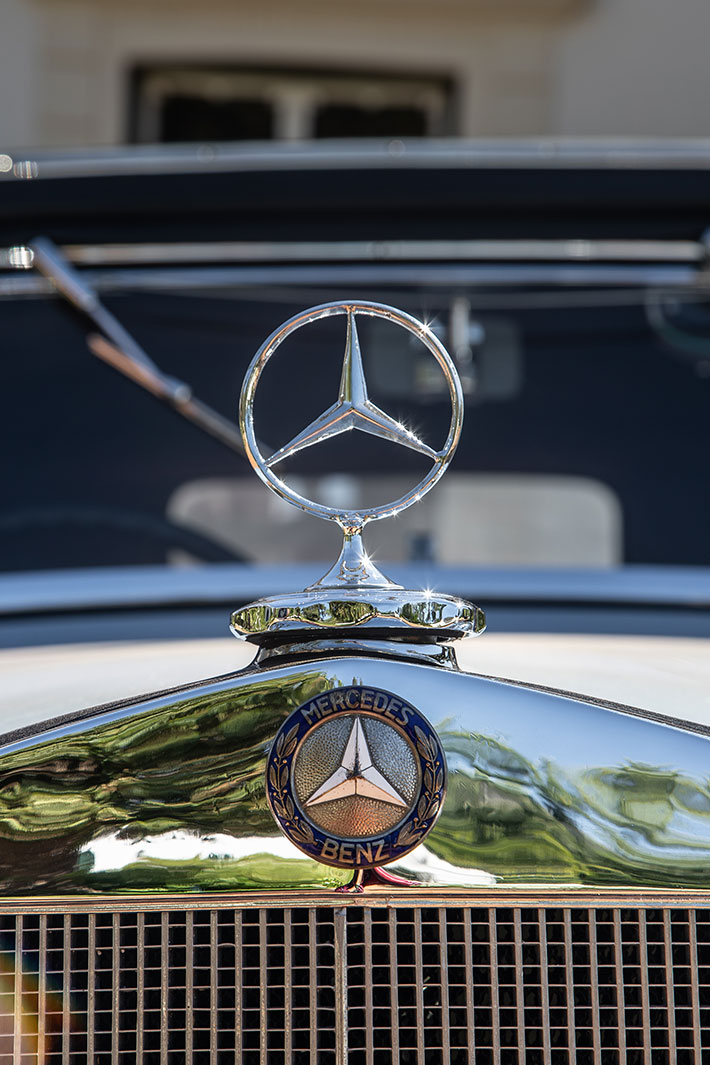
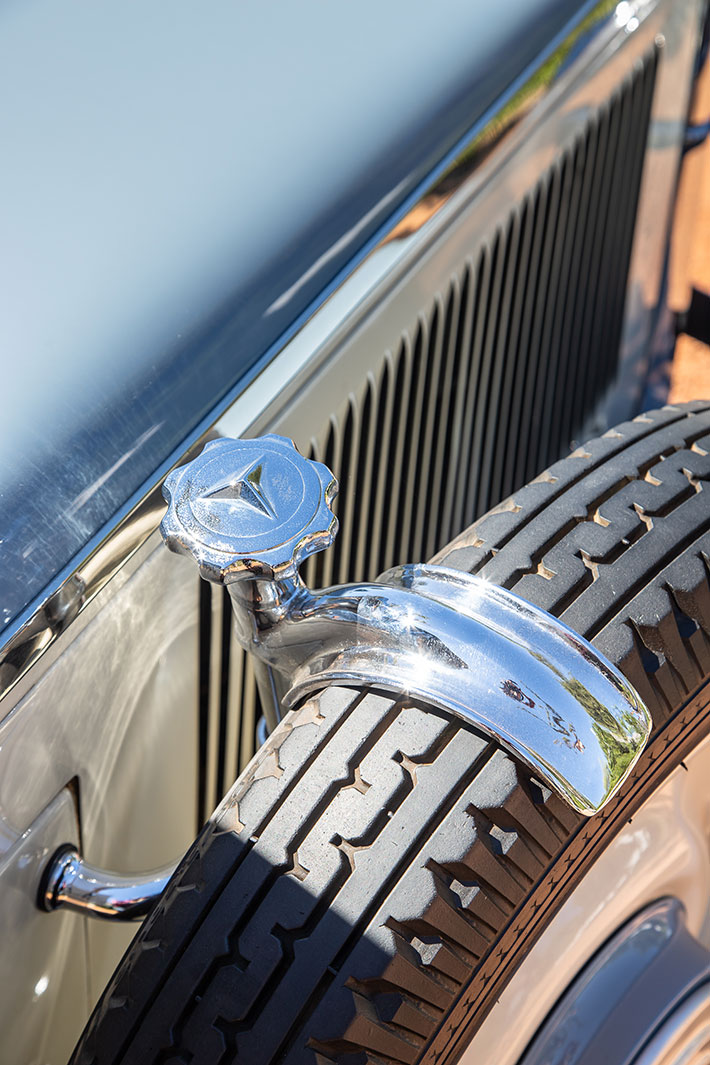 For 1936, the model’s final year, three new body variants were unveiled in February, one of which was a standard-wheelbase two-door saloon that was significantly more modern in appearance than its four-door counterpart. In June, Mercedes-Benz announced the option of a more powerful 2 229 m3 (54 hp/40 kW) engine, principally to answer criticism of the car’s leisurely performance in long bodied form, although manufacture was progressively halted by the end of the year. Total production of the standard-wheelbase model was 9 281, while the long-wheelbase model reached 6 341 units.
For 1936, the model’s final year, three new body variants were unveiled in February, one of which was a standard-wheelbase two-door saloon that was significantly more modern in appearance than its four-door counterpart. In June, Mercedes-Benz announced the option of a more powerful 2 229 m3 (54 hp/40 kW) engine, principally to answer criticism of the car’s leisurely performance in long bodied form, although manufacture was progressively halted by the end of the year. Total production of the standard-wheelbase model was 9 281, while the long-wheelbase model reached 6 341 units.
The W21’s production life was short-lived, but the model evolved in many ways and certainly contributed to Mercedes-Benz establishing itself as a premium automaker in the pre-war years, a legacy that was built upon when peace was re-established.
